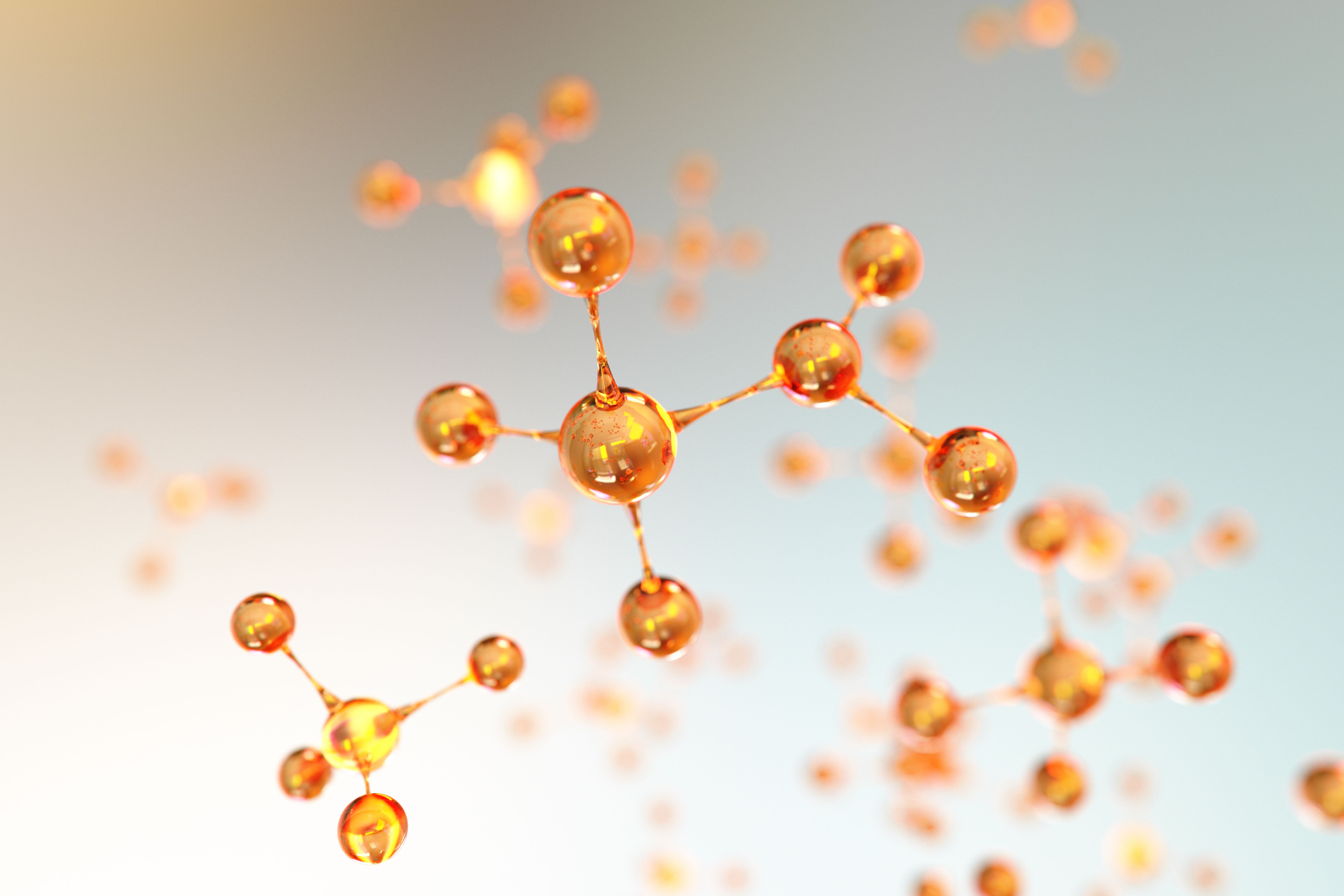Abstract Molecule Background | Image Credit: © Connect world - stock.adobe.com

In a recent study, a team of researchers revisited methoxyacetone and discovered more about its photochemistry and infrared (IR) spectra.
Recently, Igor Reva and his team at the University of Coimbra in Portugal explored the conformational space of methoxyacetone (MA) and learned more about its structural dynamics and behavior at varying energy states. Their findings were published in the journal Spectrochimica Acta Part A: Molecular and Biomolecular Spectroscopy (1).
Abstract Molecule Background | Image Credit: © Connect world - stock.adobe.com

Reva and his team’s investigation of the mechanistic interpretation of MA's photochemical behavior provided crucial insights into its reactivity under UV light, unraveling pathways toward the formation of key photoproducts.
The research revealed insights into MA's molecular arrangements. The study was conducted using computational methods at the MP2/6–311++G(d,p) and DFT(B3LYP)/6–311++G(d,p) levels (1). The team predicted four distinct conformers of MA, primarily arising from internal rotations around specific dihedral angles (1).
Out of the four conformers that were predicted, the Trans-trans conformer (abbreviated as Tt), was the most stable configuration, whereas the gauche conformers, abbreviated as Tg and Cg, exhibited higher energies in the 3– kJ/mol range (1). As a result, Tg and Cg accounted for a large percentage of the room temperature–gas phase equilibrium (1).
The research team also looked at the signatures of the conformers, finding that some of them remained undetectable, even when exposed to UV radiation. It suggested that during deposition, a conformational cooling process occurred (1).
The researchers also looked at the infrared (IR) spectroscopy of the MA monomers that were isolated in cryogenic argon matrices, which helped confirm the presence of the Tt conformer in the samples (1). Furthermore, the team successfully assigned the IR spectrum of the dominant Tt form using advanced anharmonic DFT computations, enriching the understanding of its spectroscopic characteristics (1).
There was one interesting observation the researchers noted in the study when they exposed MA to UV irradiation in the 300–260 nm range. The process unveiled a photolysis mechanism, indicative of the Norrish type II mechanism (1). This led to the observation of a cage-confined intermediate photoproduct—an enol acetone and formaldehyde dimer—preceding the formation of carbon monoxide as the predominant photoproduct, a result of the Norrish type I photoreaction (1).
This article was written with the help of artificial intelligence and has been edited to ensure accuracy and clarity. You can read more about our policy for using AI here.
(1) Sharma, A.; Gupta, V. K.; Reva, I. Methoxyacetone Revisited. Spectrochimica Acta Part A: Mol. Biomol. Spectrosc. 2024, 308, 123651. DOI: 10.1016/j.saa.2023.123651
Artificial Intelligence Accelerates Molecular Vibration Analysis, Study Finds
July 1st 2025A new review led by researchers from MIT and Oak Ridge National Laboratory outlines how artificial intelligence (AI) is transforming the study of molecular vibrations and phonons, making spectroscopic analysis faster, more accurate, and more accessible.
Toward a Generalizable Model of Diffuse Reflectance in Particulate Systems
June 30th 2025This tutorial examines the modeling of diffuse reflectance (DR) in complex particulate samples, such as powders and granular solids. Traditional theoretical frameworks like empirical absorbance, Kubelka-Munk, radiative transfer theory (RTT), and the Hapke model are presented in standard and matrix notation where applicable. Their advantages and limitations are highlighted, particularly for heterogeneous particle size distributions and real-world variations in the optical properties of particulate samples. Hybrid and emerging computational strategies, including Monte Carlo methods, full-wave numerical solvers, and machine learning (ML) models, are evaluated for their potential to produce more generalizable prediction models.
Polystyrene and UVC Sterilization Tested with Spectroscopy and Luminescence Tools
June 25th 2025A team of researchers from Spanish institutions has found that polystyrene used in healthcare packaging shows strong resistance to UVC sterilization, with minimal chemical degradation detected using FT-IR and Raman spectroscopy.